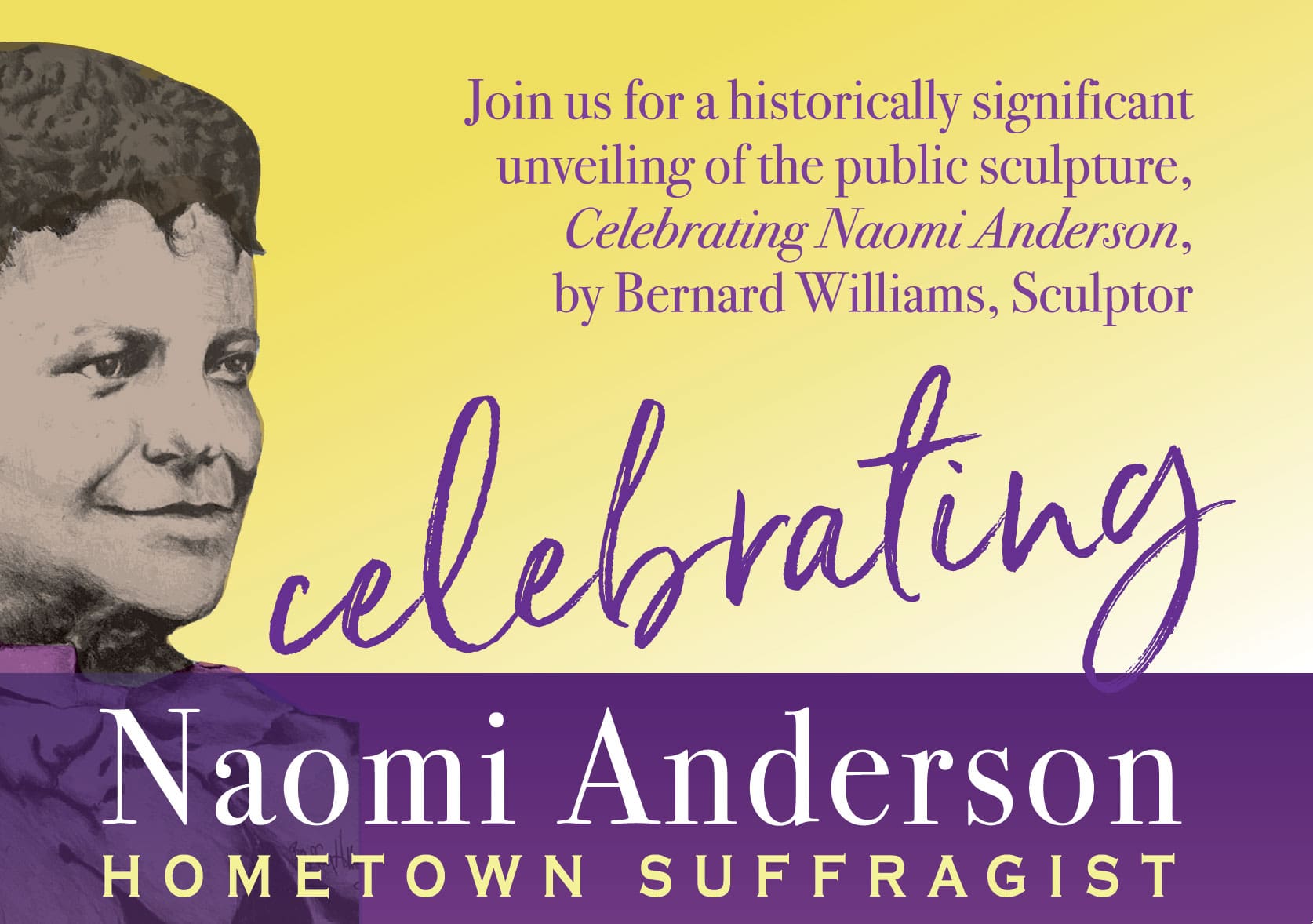A long-awaited community celebration is about to be unveiled in Michigan City.
After two steadfast years, the official public celebration of the legacy of Michigan City born-and- raised Naomi Bowman Talbert Anderson, our “hometown suffragist,” will be held.
A stunning eight-piece sculpture created by celebrated sculptor Bernard Williams, will be unveiled on Saturday, March 19th, 2 p.m. CT. A reception will follow at the Lubeznik Center for the Arts. Naomi Anderson’s great- and great-great granddaughters from Sacramento, California will attend the celebration.
The steel work, covering an expanse of 50 feet by 30 feet, has been installed in Michigan City’s Charles R. Westcott Park, near the site of the former Elite Youth Center. Westcott, a community leader, was instrumental in building the youth center. The Michigan City Mainstreet Association was the applicant for the generous grant from Indiana Humanities and the Indiana Office of Community and Rural Affairs, recognizing the legacy of women’s history in Indiana. Michigan City was one of only three cities to be awarded a project grant.
Anderson was born to a free Black family in Michigan City in 1843, just six years after the city was incorporated.
Her life of 56 years was one of many notable accomplishments.
Anderson was invited to enroll in Michigan City’s only public school, even though it was segregated, because at 12, she displayed a gift for writing poetry. This was the only formal education she received. Naomi’s mother wanted her to go to the prestigious Oberlin College, but she died when Naomi was 17 and her father needed her to care for her siblings.
At 20, she married and moved to Chicago, the first of many cities in which she either resided or made appearances.
She was the mother of 8 children; founded orphanages for children of color, became a teacher, published articles and poems, and helped to support her family, she was also a hairdresser.
In 1869, at 26 years of age, Anderson became a changemaker of national significance. At the first Women’s Rights Conference held in Chicago, Ms. Anderson delivered a fiery, controversial speech calling for the right of all women to vote. The speech was covered by many newspapers across America, making her a public sensation overnight. Her extraordinary gift for public speaking was displayed in numerous appearances throughout the country, rallying for women’s right to vote, human and civil rights.
“Naomi Anderson’s story was constructed from so many pieces. But we know we captured her spirit and recognized her remarkable dedication to human rights. She was most definitely a gifted changemaker,” says Celebrating Naomi Anderson Project Committee treasurer, Gerry Jones.
Anderson’s tenacious, highly articulate correspondence with journalists everywhere resulted in American newspapers publishing many of her letters and opinions over her lifetime. Knowing full well that women’s voices were disregarded at this time in history, she became one of the only women and a woman of color who had a voice in the nation in 19th century America. Anderson’s name headlined with suffragist Susan B. Anthony.
“She was unceasing in her dedication to the betterment of humanity,” states Bonnie Schaaf,” co- chair of the Celebrating Naomi Anderson Project Committee.
Naomi Anderson died in 1899, at the age of 56.
On August 18, 1920, the struggle enabling women’s right to vote was finally won, resulting in the landmark 19th Amendment to the United States Constitution.
“Naomi Anderson was truly a visionary. Almost 200 years ago, she spoke of us all being ‘Americans’—not ‘Irish Americans,’‘German Americans’ or ‘African Americans’. She envisioned a celebration of unity, a sentiment expressed by many today,” shares Nancy Moldenhauer, Celebrating Naomi Anderson Project Committee co-chair.
To learn more about artist, Bernard Williams, visit: www.bernardwilliamsart.com


